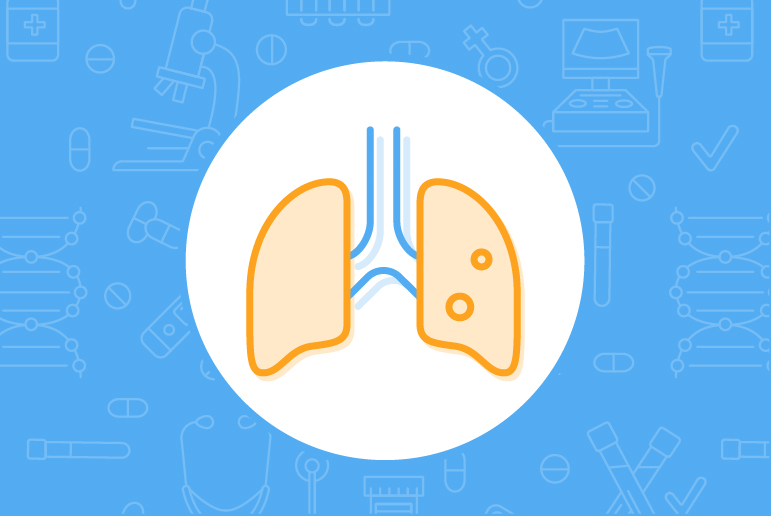Although breast cancer has certain symptoms, many women do not experience any symptoms in the early stages. Cancer discovered in the early stages has a higher chance of a successful prognosis. This is why screening tests play an important role in detecting the cancer in the early stages.
If a woman does not have a family history of breast cancer and has not been exposed to chest radiation therapy, then she is considered to be an average risk of breast cancer. A woman with average risk is recommended a mammogram every year, after the age of 40 years. After the age of 55, this can be reduced to a mammogram once in two years, if no cancer has been detected so far.
It is recommended that all women examine their breasts regularly to spot any signs or symptoms of breast cancer. Women should be familiar with how their breasts look and feel and should be able to spot any changes which need to be reported to a doctor. The most common symptom of breast cancer is a lump in the breast. Self-examination helps in the detection of such lumps while they are still small and can be surgically remov
Screening refers to a type of test that is performed to detect the cancer at the earliest, in the absence of clear symptoms. Screening may include a number of tests such as bloods tests, fluid tests and various forms of. Imaging that help doctors trace the cancer at the earliest treatable stage. Screening also enables a person to understand if they are at a higher risk of developing cancer and diagnose lung cancer.
In the case of lung cancer, there are different systems used for screening and they are listed below.
Low-dose computed tomography (LDCT)
In the case of lung cancer, low dose computed tomography is conducted on individuals who have a higher risk of developing lung cancer but show no signs and symptoms. In this kind of a screening method, X-ray machines are combined with a computer to give a cross-sectional view of the lungs. LDCT is the most common method used as the images produced are of good quality and the abnormalities that can be detected are up to 90%.
Chest X-ray
A chest x-ray is particularly used in emergency diagnosis and treatment as it is a fast method. In the chest x-ray method, a very small dose of ionizing radiation is used to produce images of the organs like the lungs, liver heart etc. A chest x-ray is also used to detect other lung conditions like pneumonia. This method of screening is most commonly used to evaluate symptoms like shortness of breath, chest pain and persistent cough.
Sputum cytology
Sputum cytology is a kind of diagnostic test that is conducted wherein a sample of the mucus that contains blood is taken and view under a microscope to check for the presence of abnormal cells.
ed from the breast.
To learn more about the screening tests for breast cancer and how to conduct self-examination of your breasts.
What is lung cancer diagnosis?
The diagnostic tests used for lung cancer can vary from patient to patient. There are also numerous other factors that doctors look into while diagnosing a patient such as medical history, symptoms, and findings from previously conducted physical examinations. Enlisted below are a few tests recommended for lung cancer diagnosis.
Common diagnostic methods for lung cancer:
Imaging tests
Imaging tests are essential for lung cancer diagnosis. They help doctors understand the location of the tumor, the grade of metastasis, treatment outcomes, and they help predict cancer recurrence. Listed below are various imaging tests:
Computed tomography (CT)
In this kind of an imaging method, X-ray machines project a cross-sectional view of the lungs on a cmputer. CT is the most commom as the images produced are of good quality, and the detection of abnormalities are up to 90%.
Positron emission tomography (PET) scan
In a PET scan, the a type of radioactive sugar is injected into the patient’s bloodstream. Since the cancer cells consume large amounts of sugar quickly, a camera is spots this kind of radioactivity. More importantly, this type of imaging test helps understand if cancer has spread to other parts of the body.
Other procedures used in the diagnosis of lung cancer
Doctors collect tissue or fluid from around the lungs and carefully test it to see if cancer cells are present in the lungs. The tests are:
Sputum cytology
Sputum cytology is a diagnostic test in which you pathologist studies a sample mucus containing blood under a microscope to check for the presence of abnormal cells.
Bronchoscopy
Doctors use the process of bronchoscopy to usually check if there is a tumor or fluid in the lungs. A bronchoscope (a tube) passes through the nose or mouth and into the lungs.
Mediastinoscopy
Mediastinoscopy is a kind of endoscopy in which a surgeon incises the base of the neck. Surgical tools are inserted behind the breastbone to take tissue samples from the lymph nodes.
Fine needle biopsy (FNAC)
Firstly, in a needle biopsy test, a fine needle scrapes off cells from the affected area. A pathologist then examines these cells under a microscope to see if they are cancerous.
Biopsy
In a biopsy, doctors remove some tissue and study it under a microscopea and pathologist identifies if it is cancerous or not. There are other tests that can suggest if the tissue is cancerous, but a biopsy is a more definitive method. Moreover, it is a standard gold test for cancer diagnosis.
Besides that, doctors recommend a biopsy after a USG or CT scan or along with bronchoscopy or mediastinoscopy.




